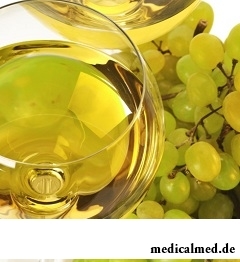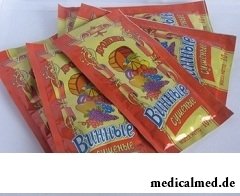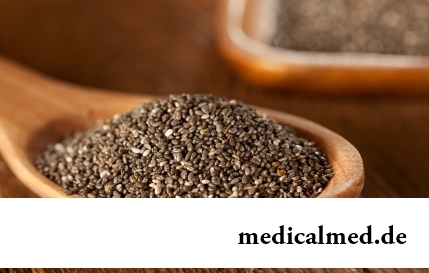





Tartaric acid
Tartaric acid is organic compound – a double-base oxyacid with HOOC-CH(OH)-CH(OH)-COOH formula.
Tartaric acid (differently – dihydroxy-succinic or tartarovy acid) represents inodorous crystals and colors which have very acid taste.
As nutritional supplement tartaric acid has the name E334.
Tartaric acid in a natural look meets in many fruit. Especially there is a lot of it in grapes and a citrus. In some products it is combined with magnesium, calcium or potassium.
Originally tartaric acid was received as a by-product of wine industry. It was generally used for prevention of growth of bacteria in wine in tubs and barrels.
Receiving tartaric acid
Receiving tartaric acid plays an important role in development of chemistry. It is considered that the first experiments on receiving tartaric acid were made still by the alchemist Jabeer ibn Hayanom in the first century. However the modern method of its production was developed by the Swedish chemist Karl Wilhelm Scheele only in the 18th century.
Now tartaric acid is produced from various raw materials, generally from waste of wine industry. The main sources of receiving tartaric acid are:
- Dried wine yeast which turns out in the course of production of wine, and also the dried-up rainfall which are formed at storage of the sulphited must;
- Wine stone which is formed on container walls at fermentation and storage of wine. As a rule, wine salts in a wine stone make 60-70%;
- The tartrate lime formed when processing yeast, a pressing, the wine remains at a sink of barrels and other container at many wine-making enterprises;
- Cretaceous rainfall which are formed in the course of decrease in acidity of wine materials and a grape must by carbonic calcium.
Salts of tartaric acid – tartrates, are formed at fermentation of grape juice.
Properties of tartaric acid
Its ability to slow down the natural changes leading to damage of products is considered the main property of tartaric acid. In insignificant quantities it not only is safe for the person, but also exerts beneficial influence on its organism. As well as natural tartaric acid which contains in fruit E334 nutritional supplement has antioxidant properties and well influences exchange and digestive processes in an organism.
Thanks to these properties of E334 tartaric acid as nutritional supplement is allowed for use by production of drinks and products on many the countries of the world that allows to increase their period of storage considerably.
However high doses of tartaric acid are unsafe as it is the muscular toxin capable to cause paralysis and death.
Use of tartaric acid
Use of tartaric acid is widespread in various industries, namely in:
- The food industry as preservative and a podkislitel of taste;
- The cosmetology industry where E334 is a component of many creams and body lotions and persons;
- Pharmaceutical industry where it is widely applied by production of various soluble medicines, and also sparkling tablets and some other drugs;
- Analytical chemistry – for detection of aldehydes and sugars, and also for division of racemates of organic matters into isomers;
- Construction – for delay of drying of some construction materials, for example, cement and gypsum;
- The textile industry – for coloring of fabrics.
Use of tartaric acid (E334) in the food industry
Tartaric acid in the food industry found the main application as antioxidant, preservative and the regulator of acidity by production:
- Dzhemov;
- Ice cream;
- Table waters and sparkling carbonated drinks;
- Konservov;
- Candies;
- Various confectionery (as emulsifier and preservative);
- Wine;
- Jelly.
Work which to the person not to liking, is much more harmful to his mentality, than lack of work in general.

The chia plant, or the Spanish sage, is from South America. The indigenous people of the continent since ancient times used in food it семена:...
Section: Articles about health
Some people consider what for medicine of the 21st century of secrets in the field of health of the person almost does not exist. It absolutely not so. The more answers scientists receive, the more the most difficult questions are raised for them by life. Besides, there are diseases, not объясн in any way...
Section: Articles about health
Life expectancy in various regions of Earth is not identical. Social stability, economic wellbeing, availability and level of medical care, household comfort, literacy of the population in the field of respect for sanitary and hygienic norms and many other factors exert impact on it. However one parameter remains to the general almost for all countries of the world: women on average live for 7-10 years longer, than men. Today we will talk about the reasons of this phenomenon....
Section: Articles about health
Not without reason doctors say that 90% of diseases begin or develop because of misoperation of intestines. Disturbance of its functions связ...
Section: Articles about health
Impossibility to conceive the child – a trouble of many Russian families. During quite long time was considered that main "culprits" of troubles such are women. Modern physicians claim that the situation is different: about a half of failures at...
Section: Articles about health
Musicotherapy – a treatment method which caused and causes a set of a controversy concerning its efficiency. However the facts are relentless: during the numerous researches curative impact of music on an organism was scientifically confirmed. Since then in a number of the countries the technique is included complex therapy of diseases of cardiovascular and respiratory system, dorsodynias and a backbone, psychosomatic disturbances and many other illnesses. The musicotherapy in a pedi is especially widely applied...
Section: Articles about health
The endocrine system carries out in a human body extremely important role, practically all processes of life activity регулируютс...
Section: Articles about health
No, probably, the person who would not have cold. Cold, cough, a headache – these symptoms are known to everyone. The peak of catarrhal diseases is the share of fall. SARS already came to schools and kindergartens, flu slowly makes the way to the cities, in a word, з...
Section: Articles about health
Popular joke that there are no healthy people, and is nedoobsledovanny, most of us considers an honest truth, continually it is necessary to hear that all of us are sick hardly from a school bench. It is hard to say whether so it actually because too often people are treated for nonexistent diseases, and sometimes call a disease what is something another. Sometimes in it the doctors of old school making diagnoses which are cancelled long ago – medicine still unless are guilty...
Section: Articles about health
People know that thermal sources have salutary force long ago. Treatment by natural waters is one and...
Section: Articles about health
The depression not without reason is considered one their main troubles of our century: for scientific and technical progress, acceleration of rate of life and a surplus of information of people it is forced to pay with stresses, negative emotions and weakening of protective forces of an organism. As a result ш...
Section: Articles about health
The state of health of the person in many respects depends on chemical composition of biological liquids of an organism. Specialists consider that PH value of these solutions has to be in range of 7,35-7, 45. The deviation in the smaller party (so-called "acidulation") is fraught with development of many heavy illnesses, failures in work of immune system, decrease in working capacity and deterioration of life. To avoid serious fluctuations of acidity of internal liquids it is necessary to adhere разумног...
Section: Articles about health
The body of the person almost for 60% consists of water. It is so important for normal functioning of an organism that loss of all is ponut...
Section: Articles about health
Feeding by a breast - the integral part of ideal motherhood allowing to come into contact with the kid and to create to it healthy immunity since early years. Nevertheless, this important process in life of mother and child can be saddened laktostazy − by a delay of milts...
Section: Articles about health
For the city dweller the fitness is the most convenient sport. It is enough to acquire the subscription to the gym to get access to various apparatuses and an opportunity to train under the leadership of the experienced consultant. Many consider fitness the best way of maintenance of physical shape and receiving dynamic loads which the people occupied preferential with brainwork so need. Nevertheless, representations of most of consumers of similar services about специф...
Section: Articles about health
Modern footwear is extremely various. It stopped being only protection for legs long ago. Today shoes, boots, barefoot persons in...
Section: Articles about health
Transfusion of donor blood has almost century history. In spite of the fact that this procedure is quite usual for many people, process of blood donation is still surrounded with numerous myths. Today we aimed to discredit the most widespread of them....
Section: Articles about health
On the head of the person about one million hair follicles, or as they are called still, hair bulbs are located. At the time of the birth most of them is in the "sleeping" state, but within several weeks follicles become more active, and from them hair begin to grow. Intensity of this process is individual, and during life it can change. Genetic predisposition, a physical and emotional state, aggressive influence affects the growth rate of hair out of...
Section: Articles about health
Tea is loved and use almost everything. This drink has tonic properties, contains the tannins capable podavlit...
Section: Articles about health
Bees – really unique beings. Practically all products of their life activity are used by the person. Since the most ancient times medicinal properties of honey and other substances received in the course of beekeeping are known. The fact that all these пр is especially significant...
Section: Articles about health
The medicine promptly develops, and the fact that else quite recently it seemed by miracle can now. We are not surprised any more to the fact that people with artificial joints and extremities can play sports, organ transplantation became a routine, and the latest cancer medicine allowed to achieve reduction of mortality in tens of times. Miracles of plastic surgery thanks to which people in 60 years are in the flower of beauty and freshness, too not a sensation any more....
Section: Articles about health
Today about 30 diseases, sexually transmitted are known. To wide circulation of these illnesses extremely with...
Section: Articles about health
Partial and the more so full loss of hearing significantly reduces quality of life. Difficulties with communication lead to loneliness and isolation. The person who badly hears experiences difficulties with social and professional implementation, quite often has problems in...
Section: Articles about health
Life of the modern woman is very difficult. Opportunities to realize itself are wide: it not only education and career, but also the most various hobbies from sport before needlework. It is not less important to build private life, paying an attention maximum to children, the husband, parents, friends. For all these affairs there is catastrophically not enough time therefore each of us tries to cut down as far as possible its expenses on necessary, but not the most fascinating housework. With it we are successfully helped by means...
Section: Articles about health
Aging — natural and inevitable process. Over time our skin loses elasticity, on it saggings, a face form теря are formed...
Section: Articles about health
One of the major chemical processes happening in a human body are oxidation reactions. They go with participation of fats and carbohydrates which we receive from food, and the oxygen getting to us from air. A main goal of such reactions is it is received...
Section: Articles about health
Physical activity is necessary for normal functioning of a human body. At a lack of the movement joints cease to function, muscles atrophy, cardiovascular activity is broken and the metabolism worsens. The modern city rhythm of life does not provide the person with an adequate exercise stress, additional - sport is necessary. Tedious tasks the huge number of the people having those or ин exists sport not all to liking, but also...
Section: Articles about health
